Sculptures, Statues And A Lot Of History
This exhibition I'm going to post about today was a mixed one. Two artists exhibiting their amazing works. Mária Hunyadi and László Hunyadi, husband and wife, showing the public their creativity and ideas. There was a mix of artworks, ranging from fiber art to statues and metal plates, but today I'm going to focus on László Hunyadi's work exclusively.
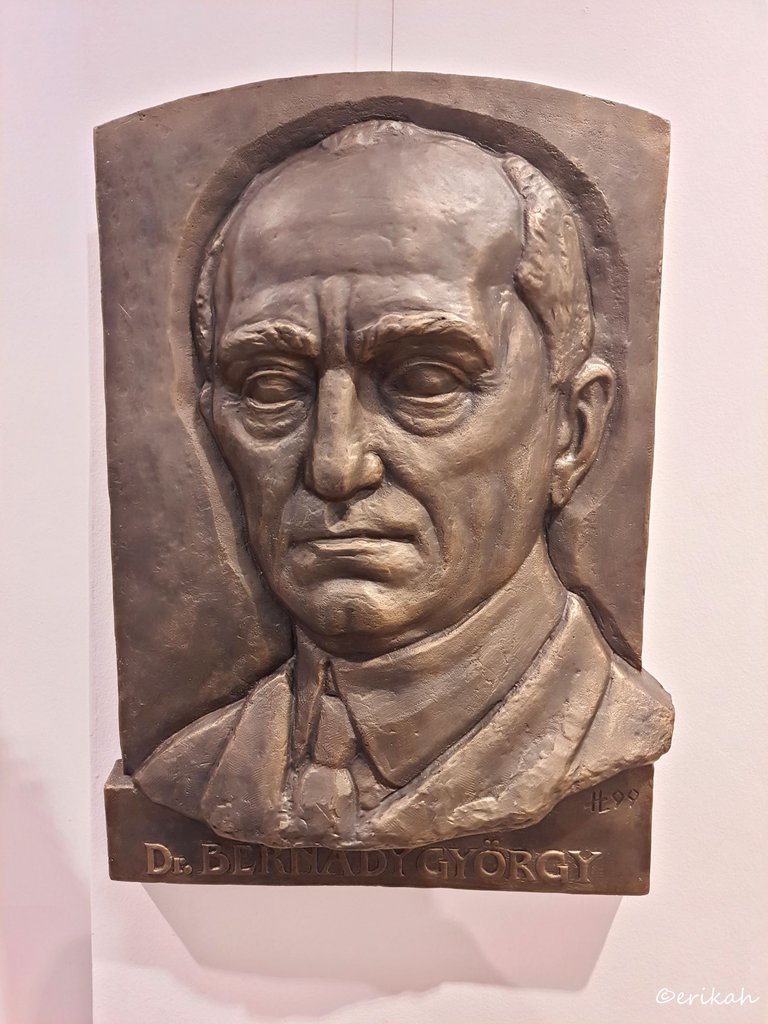
Dr. György Bernádi
Dr. György Bernádi is a well known figure in Transylvania's history. He had a huge contribution in the development of Marosvásárhely, there's a square named after him, and there's a statue in his memory too, making the square more memorable.
György Bernády (Bethlen, 10 April 1864 – Târgu Mureș, 22 October 1938) was the mayor of Târgu Mureș (Marosvásárhely) twice, 1900–1912 and 1926–1929. In this period the City Hall and the Cultural Palace in Târgu Mureș on the Roses Square were both built. His name is associated with public illumination and sewerage in the city. In this period many schools, libraries and art galleries were also built. source
There are photos of György Bernády from his days, several statues, busts and paintings, so I can tell you, this metal plate is a wonderful piece of art.
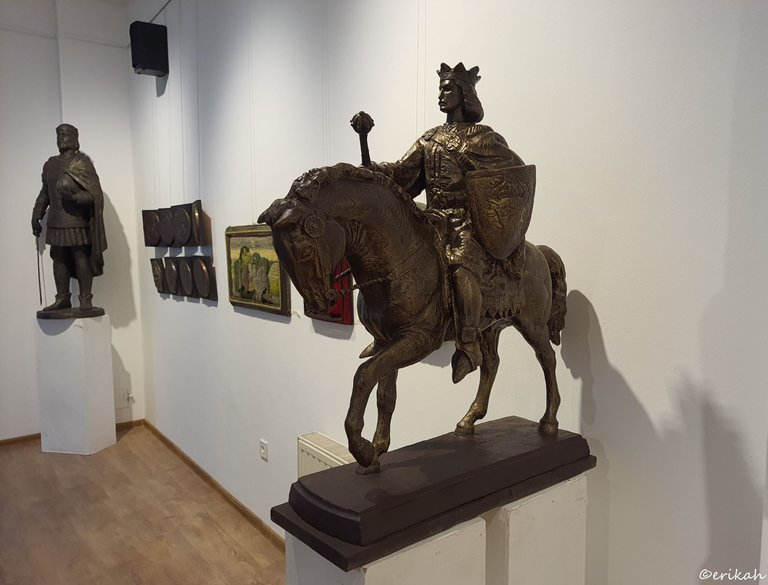
Stephen the Great
Statue of Stefan Cel Mare, or Stephen the Great in English, by László Hunyadi.
Stephen III, commonly known as Stephen the Great (Romanian: Ștefan cel Mare); died on 2 July 1504), was Voivode (or Prince) of Moldavia from 1457 to 1504. He was the son of and co-ruler with Bogdan II, who was murdered in 1451 in a conspiracy organized by his brother and Stephen's uncle Peter III Aaron, who took the throne. Stephen fled to Hungary, and later to Wallachia; with the support of Vlad III Țepeș, Voivode of Wallachia, he returned to Moldavia, forcing Aaron to seek refuge in Poland in the summer of 1457. Teoctist I, Metropolitan of Moldavia, anointed Stephen prince. He attacked Poland and prevented Casimir IV Jagiellon, King of Poland, from supporting Peter Aaron, but eventually acknowledged Casimir's suzerainty in 1459. source
Looking at this statue, makes me want to sit next to a sculptor and watch the artist work. I've seen snippets of their process, but it would be interesting to see an artwork from infancy to completion.
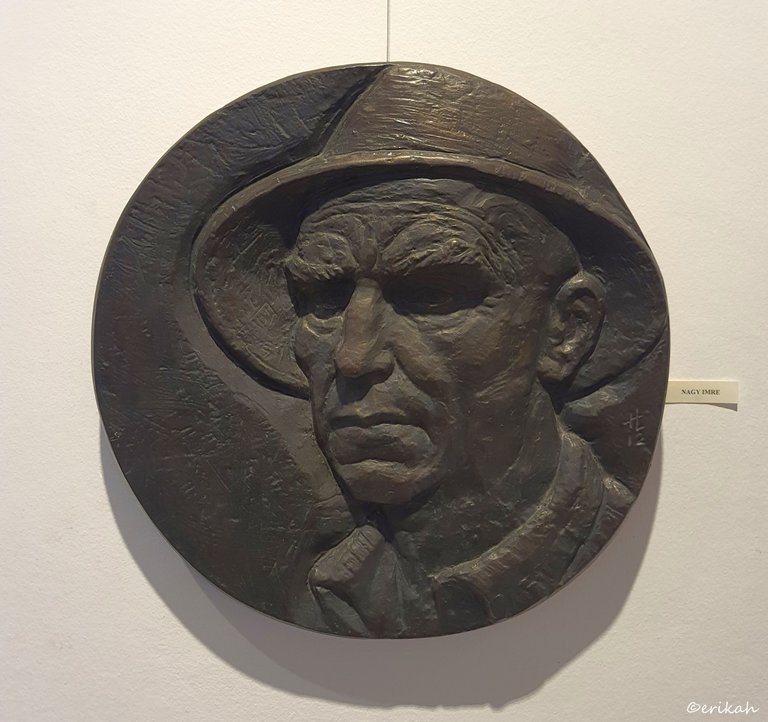
Imre Nagy
Imre Nagy is also a prominent figure of the Transylvanian cultural life.
Imre Nagy also Imre Zsögödi Nagy, Imre Nagy of Jigodin (25 July 1893 – 22 August 1976) was a Romanian-Hungarian painter, born in the part of Hungary that later became part of Romania.
Nagy was active as an artist for 54 years. He lived in a simple house with three rooms, which he expanded in 1966 with an art studio. All his working life he started working there every day at six o'clock in the morning, and this until a very old age. source
While I was looking at this metal sculpture, was thinking about the similarities between creating such an artwork and taking a photo. Obviously the latter is much more easier and faster, but from framing perspective, there are a lot of similarities. Here the artist chose to respect the rule of third, if there's such thing in art and I love it.
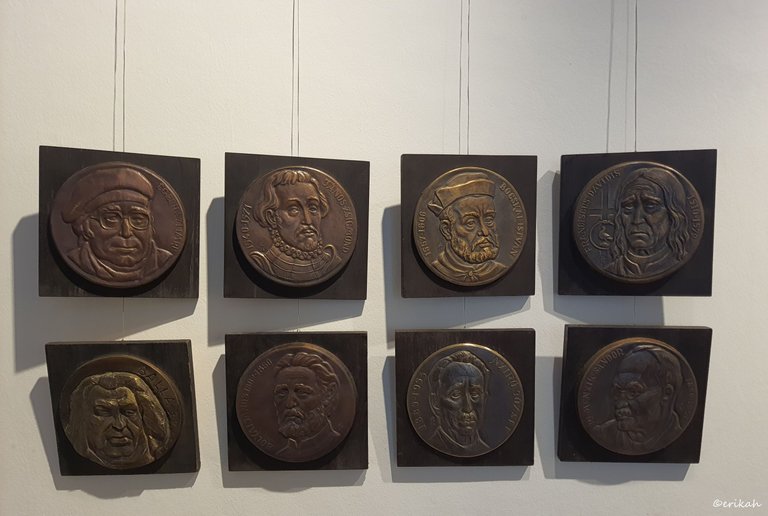
This was a very interesting part of the exhibition. Most likely it's a series as looking at the personality names, it makes sense to make it a series.
Franciscus Davidus, 1510 - 1579
István Bocskai, 1557 - 1606
Zsigmond János 1540 - 1571
János Bolyai 1802 - 1860
Just to name a few. Apart from the artistic value of these artworks, there's the historical and cultural value to consider as well. The personalities you see on these sculptures had a fair amount of influence in the region's history. Some of them are well known by most of us living here, but there are some who are less known.
This happens to me at every exhibition. I see a painting or a sculpture, about someone or something I have no knowledge about and the first thing I do when I get home is to look them up and learn as much as I can about them. It's a great way to learn. Once stored in your long time memory, it's highly likely you will remember it later.
Last time I posted about this exhibition, I told you there was an elderly couple as well. At some point they saw a painting about someone they did not know. What do you think the woman did? She took out her smartphone and asked google to look the person up! And she was in her late 60's in my opinion. Now that's a smart way of handling things. And there are those who run through the exhibition in 2 minutes and they are done. Nothing wrong with that either as each to their own.
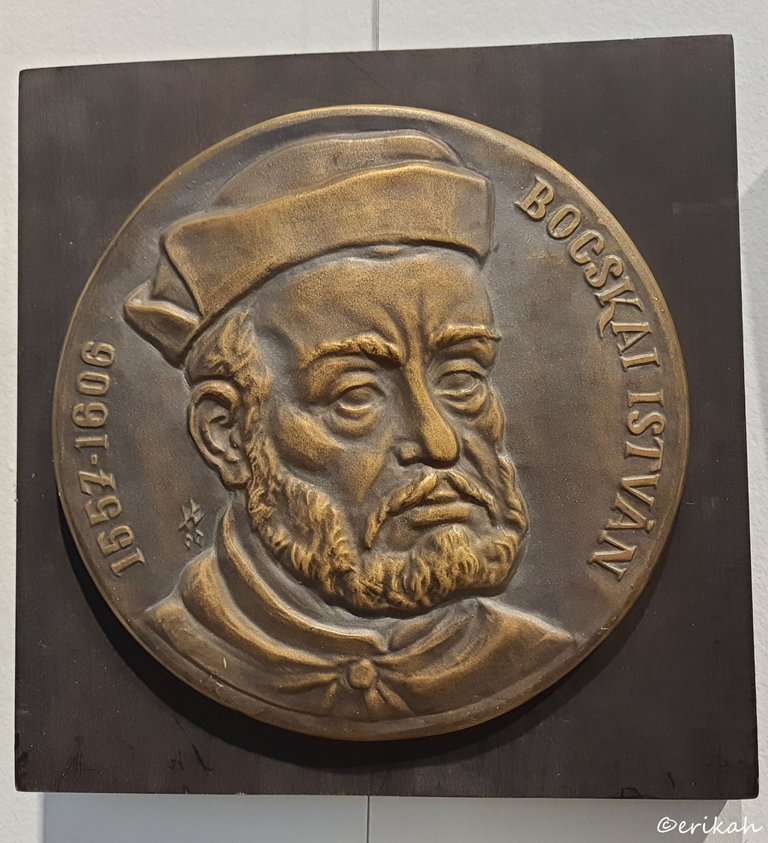
To get back to the sculptures, I picked one to show you the details. This is István Bocskai, or Stephen Bocskai in English, Prince of Transylvania and Hungary from 1605 to 1606. Look at the details! Look at how the relief is made to create shadows. I love it!
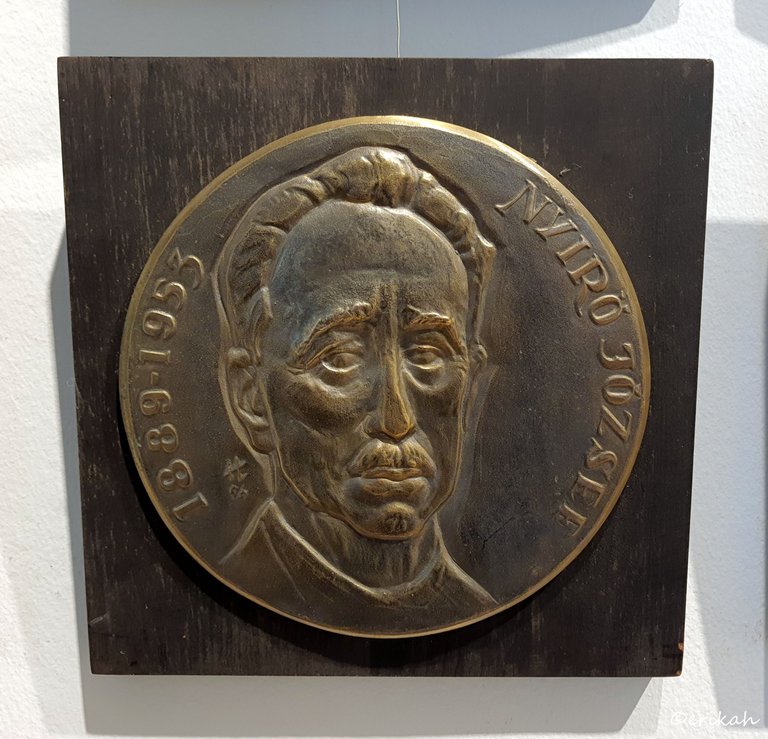
Nyírő József, 1889 - 1953
Nyírő József was a Hungarian writer, a well known one, I have most of his books on my shelf today. Look at the facial expression of the writer, his facial features. It's a great work in my eyes.

Stephen I of Hungary
Stephen I, also known as King Saint Stephen (Hungarian: Szent István király c. 975 – 15 August 1038), was the last Grand Prince of the Hungarians between 997 and 1000 or 1001, and the first King of Hungary from 1000 or 1001, until his death in 1038. source
An other important figure in Hungary's history, that can't be missing from the exhibition. As you can see, Szent István (the Hungarian name) lived between 975 – 1038. Back in those days there were no photos. There are a bunch of statues, sculptures and paintings, but no clear picture of the great king. In cases like this, you evaluate the execution of the statue and I like what I see.
I hope you have a favorite too :)

If you're a newbie, you may want to check out these guides:
- Communities Explained - Newbie Guide
- Cross Posting And Reposting Explained, Using PeakD
- Hive Is Not For Me
- How To Pump Your Reputation Fast - Newbie Guide
- Tips And Tricks & Useful Hive Tools For Newbies
- More Useful Tools On Hive - Newbie Guide
- Community List And Why It Is Important To Post In The Right Community
- Witnesses And Proposals Explained - Newbie Guide
- To Stake, Or Not To Stake - Newbie Guide
- Tags And Tagging - Newbie Guide
- Newbie Expectations And Reality

None of ur post would be boring...
It's amazing u have always something really great to share with us.
❤️
Thank you @fonestreet, I'm trying my best!
Very nice post. I really loved your shared post.
She's amazing
I am telling you
Many thanks!
The lady of the old couple is smart, I mean they learn about the technology in their old age and still manage to make use of it very well, while some younger generation here in my place can't even use it properly. : )
interesting art exhibition my friend.
We agree on that, I was pleasantly surprised by what the lady did and happy that such people exist. No worries as unfortunately there are plenty people here too, from the younger generation, who can't do anything better with their phone that surf FB and play stupid games. That's all.
Thanks for the nice comment @ekavieka :)
I like the sculpture of Imre Nagy. It looks like a portrait of a peasant which makes sense based on the blurb about how simply he lived.
PS It was difficult but I refrained from any more Steven/Stephen jokes 😅
That is a good one, nice choice. I hope I can visit the museum, where his works are exhibited and fingers crossed, to be allowed to take photos.
You don't have to refrain yourself from the jokes in the future. Let's hear them 😁
Hello my friend @erikah, I always miss the exhibition places you visit, there is indeed nothing boring in every exhibition place you visit, it is always fun. Good shot 😊🥰
We agree on that, none of the exhibitions are boring and I'm glad you like these posts :)
I also have a collection of some old coins, unfortunately I don't know what country's coins are?
These are a bit bigger than coins, bigger than usual plates too.
Thank you for sharing details about the art exhibition featuring the works of Mária Hunyadi and László Hunyadi. The sculptures and statues you showcased are indeed impressive, each capturing the essence and significance of the historical figures they represent.
The attention to detail, especially in the relief work and facial expressions, is remarkable. It's always fascinating to learn about the historical and cultural context behind each artwork, and your post provides valuable insights into the lives of these prominent figures.
Thank you for stopping by and commenting.
Fascinante!!! Esas son personas que en verdad merecen nuestra admiración,porque hace siglos atrás cuando ellos gobernaban en sus respectivas regiones,ya tenían esa visión de ciudades organizadas y por eso construían las bibliotecas,sistemas de drenajes etc,era algo natural en ellos porque en esos tiempos no había internet,teléfonos, periódicos etc etc pero si había visión y sentido de pertenencia para dedicar a sus ciudades natales saludos
Indeed, they had done a lot for the people, one way or another and that is why they had written their names in the history books.
Un legado....
Nice share. you should share your work on #FreeCompliments to get certain rewards that you deserve.
Thank you, but this is not my work.
Oye que dicha que puedas ver estás obras de arte acá no contamos con tal privilegio, gracias por compartir.
I am indeed lucky, I have several exhibition rooms available, most of them for free.
Oh how envious, here where I live you don't see that, unless you travel to the capital city.
I almost confused Stephen the Great for King Saint Stephen. They're my favorites because I just like standing or stand-alone artworks. There's just something about them. Like his close neighbour, Stephen the Great represents a warrior and/or a king. Without reading about them, by just looking your first thought is, "oh what a fine King or warrior, so yep, I like.
The writer, József, never heard of him but, I see and appreciate the facial expression feature you mentioned. These are detailed and I think it's great work too.
It's a nice exhibition to have been at.
Cheers!
Good thing the almost is there as these are two different people :)
It was indeed a nice exhibition with lots of valuable works.
Have a nice day!
I did. Thanks!
@erikah Awesome! I am totally unfamiliar with the Transylvanian history but the metal plate portraits mesmerized me. Each figure has such a distinct character! Kudos to the artist and to you for capturing them so perfectly. You have a great taste in art.
I also loved the Stephan the great statue. Detailing is so amazing
My passion is wildlife photography and I click live subjects. However, to capture and present inanimate subjects like you did takes a special skill!
Cheers
Thank you but more kudos to the artist as the heavy work was done by him.
I think each category has its own challenges. Wildlife can be extremely demanding, you need to have a lot of patience and be in the right place at the right time. I don't think I would be good at it.
Photographing art can be also challenging, but the challenges are different. My biggest enemy is reflection and there's little I can do about it, unfortunately.
Que bueno conocer un poco más sobre la historia del lugar, me quede muy sorpendido de que estas piezas esten hechas en metal, hay que tener una gran habilidad para lograr esto. Despues por otro lado pense que las piezas de la exhibición parecen monedas gigantes y llevarlas en la billetera seria un poco dificil, pero nada, un pensamiento intrusivo que quise compartir jajaja
You're not the only one, someone also thought they are coins. Well, these were quite big metal plates. And yes, it was full of history.